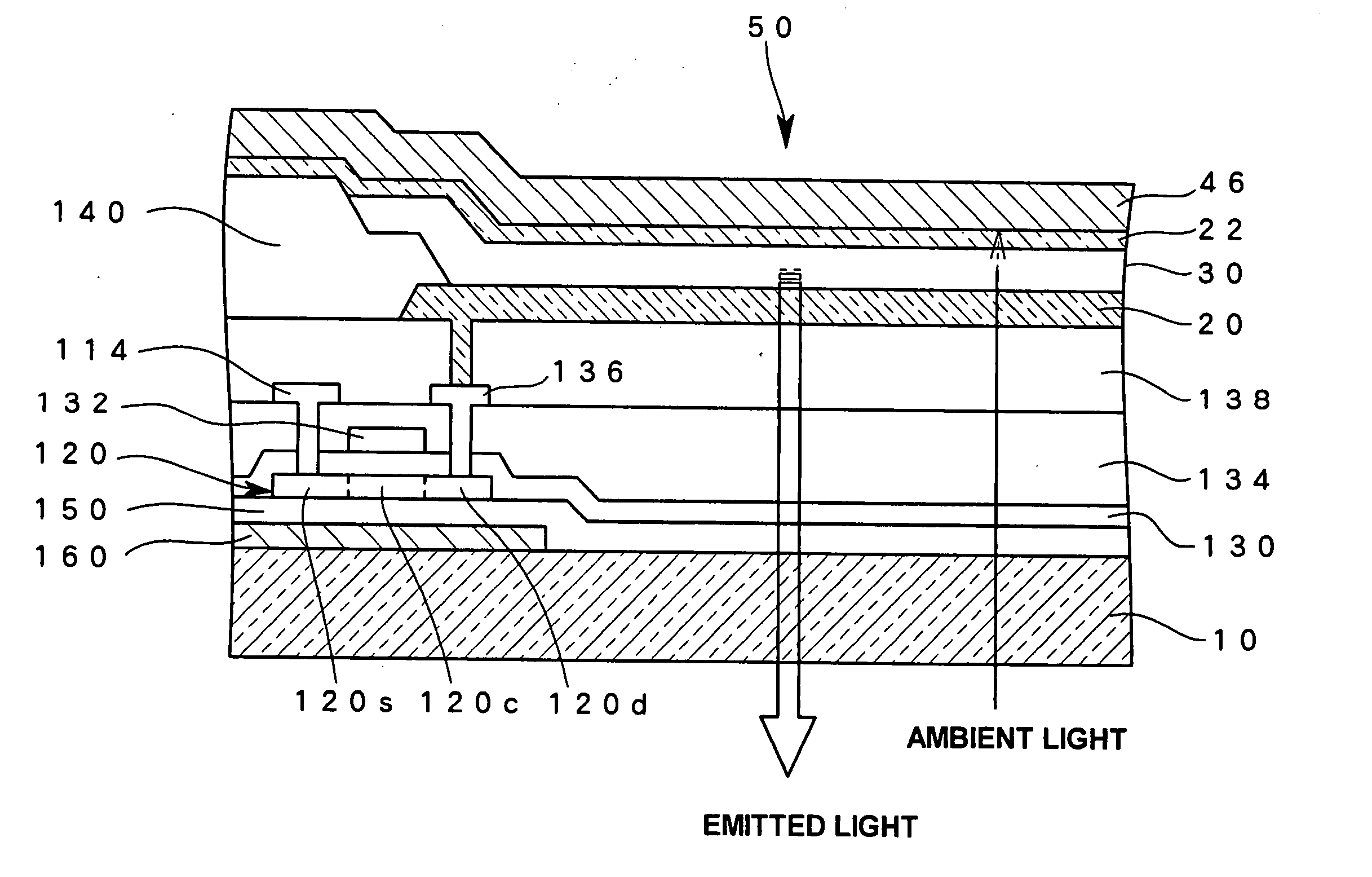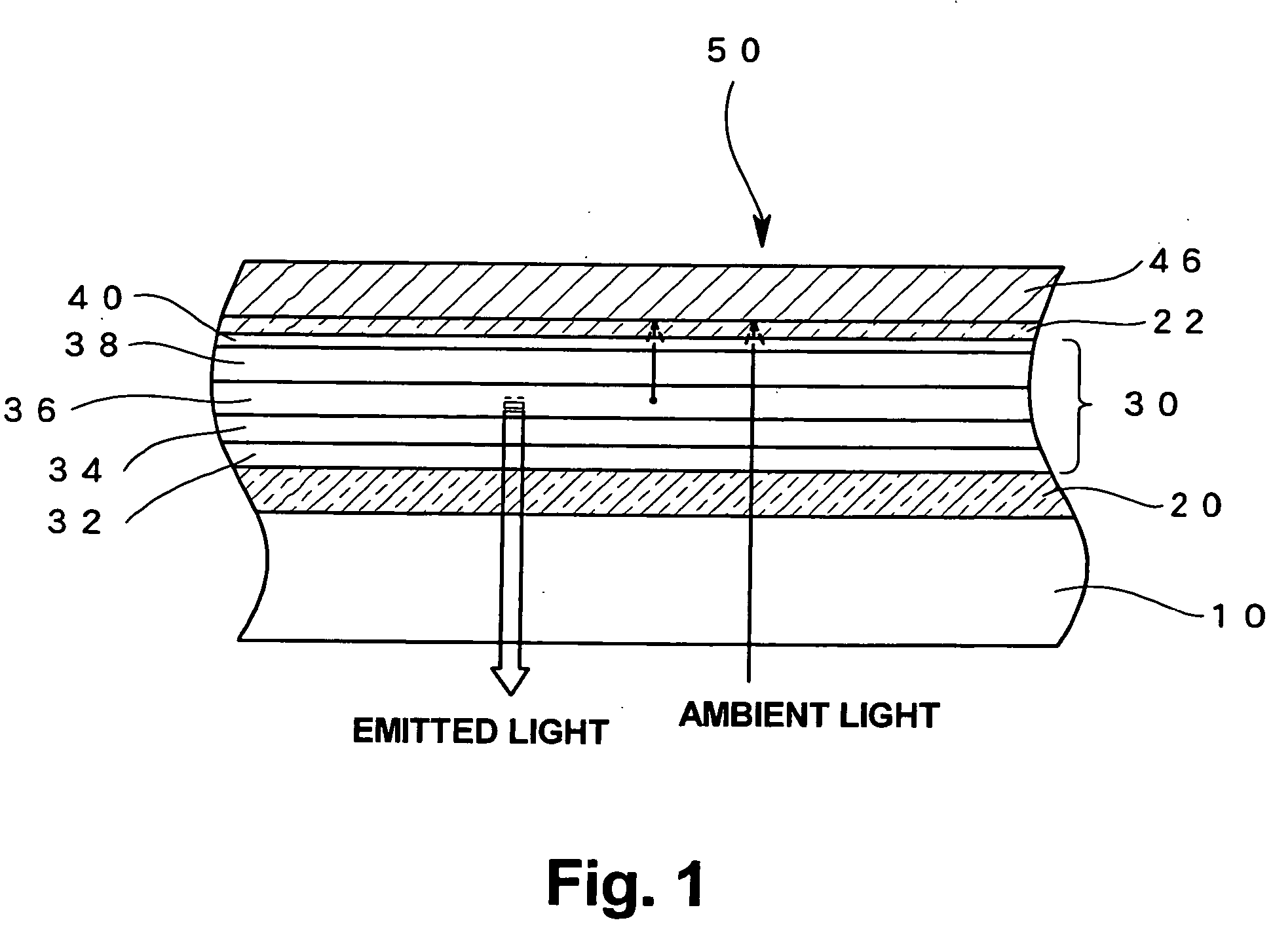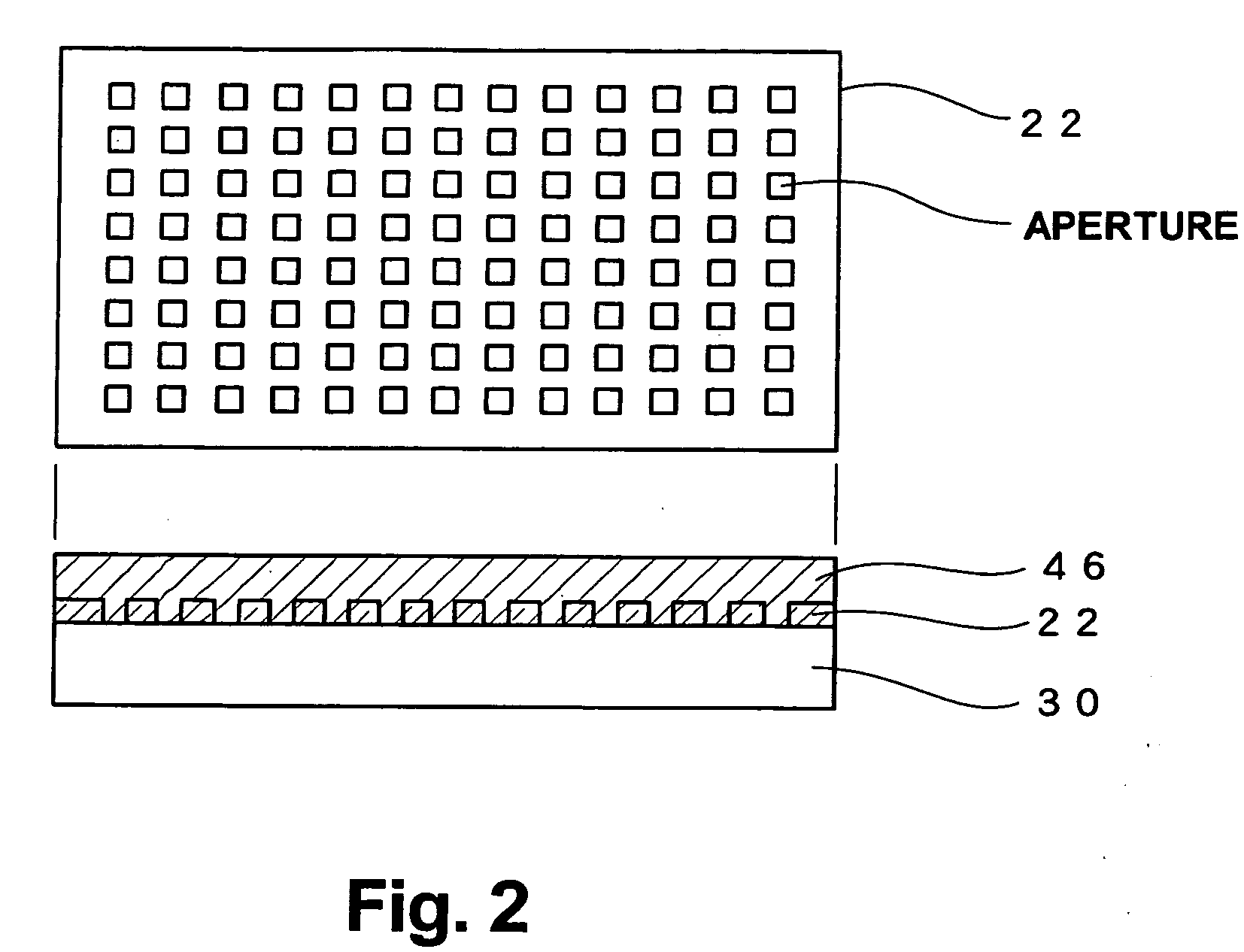Light emitting element and light emitting display
a technology of light emitting elements and light emitting displays, which is applied in the direction of power-operated mechanisms, door/window fittings, wing accessories, etc., can solve the problems of significant reduction in the efficiency of emitted light use, reduced display quality, and reduced visibility of displayed images
- Summary
- Abstract
- Description
- Claims
- Application Information
AI Technical Summary
Benefits of technology
Problems solved by technology
Method used
Image
Examples
Embodiment Construction
[0030] A preferred embodiment (hereinafter, referred to as an "embodiment") of the present invention will be described with reference to the drawings.
[0031] An EL element is suitable as an example light emitting element according to the embodiment of the present invention. Using such an EL element as an illustrative example, FIG. 1 shows a schematic cross section of an element according to this embodiment of the present invention. A transparent substrate made of glass, plastic, or the like is used as a substrate 10, and components of an EL element are layered over the transparent substrate 10. In this example, an EL element 50 is an organic EL element which uses an organic compound as a light emitting material, and a light emitting element layer 30 containing the organic compound is formed between a first electrode 20 and a second electrode 22.
[0032] In the organic EL element 50 as shown in FIG. 1, the first electrode 20 is made of a transparent electrically conductive material such...
PUM
 Login to View More
Login to View More Abstract
Description
Claims
Application Information
 Login to View More
Login to View More - R&D
- Intellectual Property
- Life Sciences
- Materials
- Tech Scout
- Unparalleled Data Quality
- Higher Quality Content
- 60% Fewer Hallucinations
Browse by: Latest US Patents, China's latest patents, Technical Efficacy Thesaurus, Application Domain, Technology Topic, Popular Technical Reports.
© 2025 PatSnap. All rights reserved.Legal|Privacy policy|Modern Slavery Act Transparency Statement|Sitemap|About US| Contact US: help@patsnap.com



